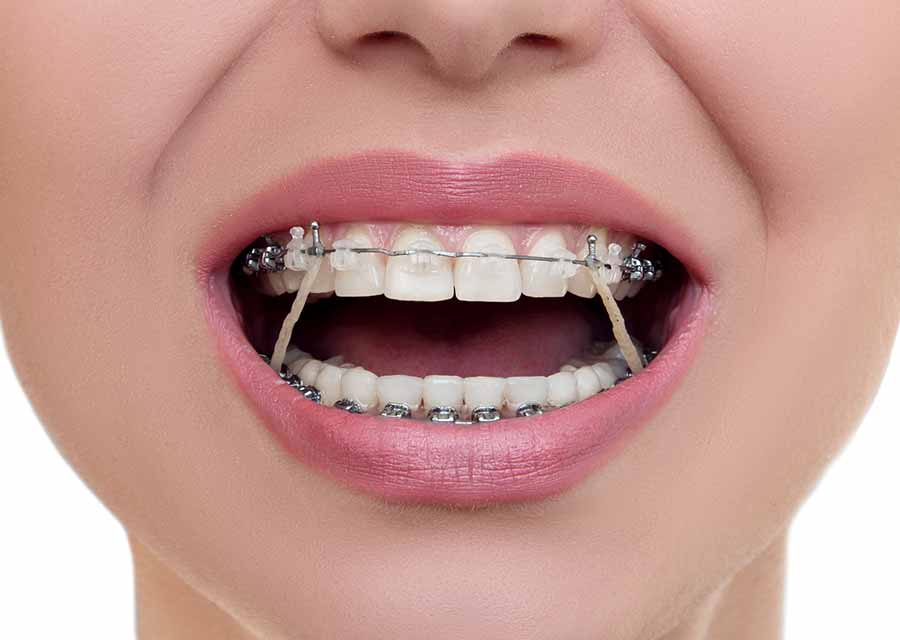The 25-Second Trick For Legacy Orthodontics
The 25-Second Trick For Legacy Orthodontics
Blog Article
Legacy Orthodontics Can Be Fun For Anyone
Table of ContentsLegacy Orthodontics Fundamentals ExplainedGetting The Legacy Orthodontics To Work10 Simple Techniques For Legacy OrthodonticsNot known Incorrect Statements About Legacy Orthodontics Getting My Legacy Orthodontics To Work
In enhancement, we use flexible treatment schedules, versatile repayment options and a fun, satisfying experience.An orthodontist is a dental expert trained to diagnose, protect against, and deal with teeth and jaw abnormalities. They deal with existing conditions and are trained to identify problems that might establish in the future. Orthodontists work with people of any ages, from youngsters to grownups. People typically associate a perfect smile with healthiness.
Malocclusion, or misaligned teeth, can lead to oral problems, including dental caries, periodontal disease, and difficult or agonizing chewing. Yet not every person is born with straight teeth. If you have a bad bite or huge spaces in between your teeth, you may intend to get in touch with a dental practitioner focusing on orthodontic care.
3 Easy Facts About Legacy Orthodontics Explained
( Photo Credit Score: DigitalVision/Getty Images) Orthodontists utilize taken care of and removable oral tools, like dental braces, retainers, and bands, to transform the placement of teeth in your mouth. Orthodontic therapy is for dental problems, consisting of: Misaligned teethBite issues, like an overbite or an underbiteCrowded teeth or teeth that are too far apartJaw misalignmentThe goal of orthodontic therapy is to enhance your bite.
A healthy and balanced bite ensures you can eat, eat, and speak effectively. While you might consider orthodontists as generally for kids or teenagers that require braces, they can correct dental issues at any type of age. Orthodontists go to college, oral college, and orthodontic institution. After college graduation, they invest 2 or 3 years in an orthodontic residency program.
, however not all dentists are orthodontists. They focus on 2 areas: How to effectively and safely move teeth Just how to properly lead development in the teeth, jaw, and faceOnce an orthodontist has actually completed training, they have the alternative to come to be board accredited.
Getting The Legacy Orthodontics To Work
Imbalance, or malocclusion, is the most common factor people see an orthodontist. It is hereditary and is the outcome of dimension distinctions between the top and reduced jaw or between the jaw and teeth. Malocclusion leads to tooth overcrowding, an irregular jaw, or irregular bite patterns. Malocclusion is normally treated with: Your orthodontist connects steel, Check Out Your URL ceramic, or plastic square bonds to your teeth.
If you have just small malocclusion, you may be able to make use of clear braces, called aligners, as opposed to traditional dental braces (http://tupalo.com/en/users/8018300). Some individuals need a headgear to aid relocate teeth right into line with pressure from outside the mouth. After braces or aligners, you'll require to use a retainer. A retainer is a custom gadget that keeps your teeth in location.
They're frequently used on kids. They can develop additional room in the mouth without needing to pull teeth. If you have a major underbite or overbite, you may require orthognathic surgical treatment (also called orthodontic surgical procedure) to lengthen or reduce your jaw. Orthodontists use wires, medical screws, or plates to sustain your jaw bone.
You may need to see an orthodontist if you have: Crowding or otherwise sufficient area for all of your teethOverbite, when your upper teeth come by your bottom teethUnderbite, when your base teeth are also far forwardSpacing or concerns with gapsCrossbite, which is when your top teeth fit behind your bottom teeth when your mouth is closedOpen bite or an upright void in between your front base and top teethMisplaced midline, when the center of your bottom and top teeth don't align Fixing an oral malocclusion can: Make attacking, eating, and talking easierImprove the proportion of our face and your total appearanceEase pain from temporomandibular joint conditionsSeparate your teeth and make them easier to clean up, helping stop dental cavity or cavities It's frequently a dental practitioner who first notifications misaligned teeth during a regular exam.
More About Legacy Orthodontics

Throughout your initial orthodontic examination, you'll likely have: A dental examPhotos taken of your face and smileDental X-raysPanoramic (360 degree) X-rays of your face and headImpressions to develop molds of your teethThese tests will certainly help your orthodontist know how to continue with your therapy. leesburg braces. An orthodontist is a dental practitioner that's had training to treat your teeth and jaw
Orthodontists might do surgical procedure, exams,X-rays,and more to aid you achieve an extra comfy, healthier smile. An orthodontist is concentrated on your bite, so something like a damaged tooth would certainly be handled by a dental practitioner. Orthodontists are dental practitioners but not all dental experts are orthodontists. Orthodontists are concentrated on your bite, or the way your teeth fit with each other, and the straightness of your teeth.
Ever before questioned exactly how celebs constantly appear to have perfectly aligned teeth? The answer frequently lies in the proficient hands of an orthodontist. Yet what exactly does an orthodontist do? Orthodontists are dental experts who concentrate on correcting abnormalities in the teeth and jaws. Their know-how surpasses just developing a stunning smile; it includes enhancing your overall dental health and wellness and function.
The Best Strategy To Use For Legacy Orthodontics

While braces are one of the most commonly identified orthodontic treatment, orthodontists have a diverse toolkit at their disposal. The specific method selected relies on the intensity of the instance, the individual's age, and private choices. These tried-and-true dental braces make use of a system of braces bound to the teeth and connected by cords.
These detachable trays are custom-made to gradually change the teeth's placement. In situations of narrow jaws, palatal expanders can be made use of to create area for proper tooth positioning.
Report this page